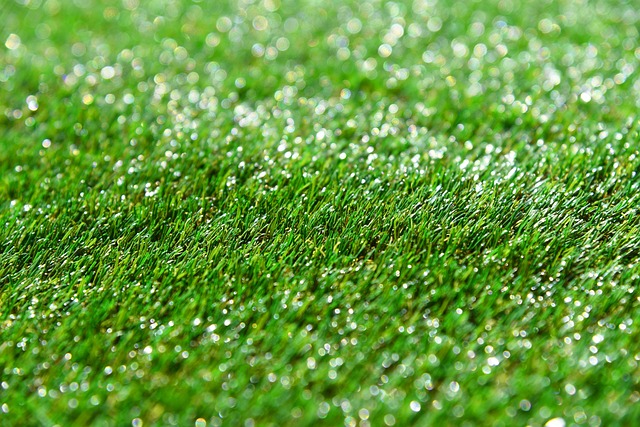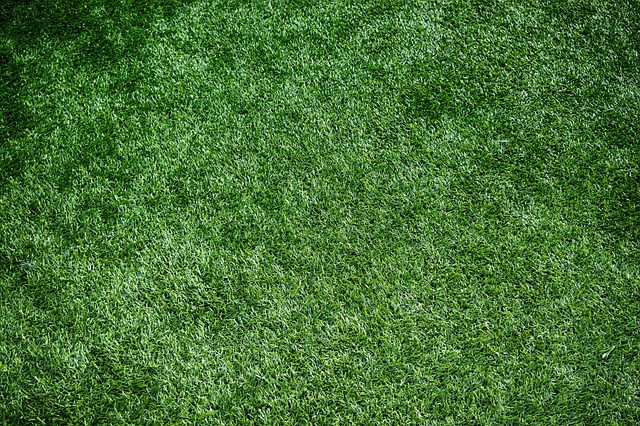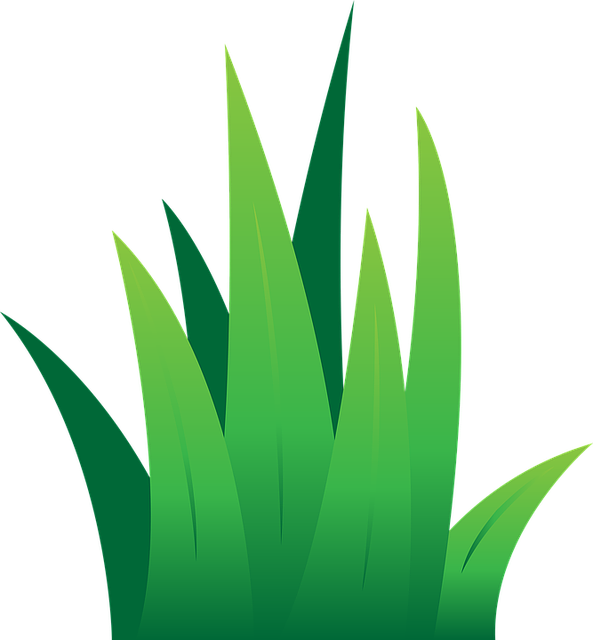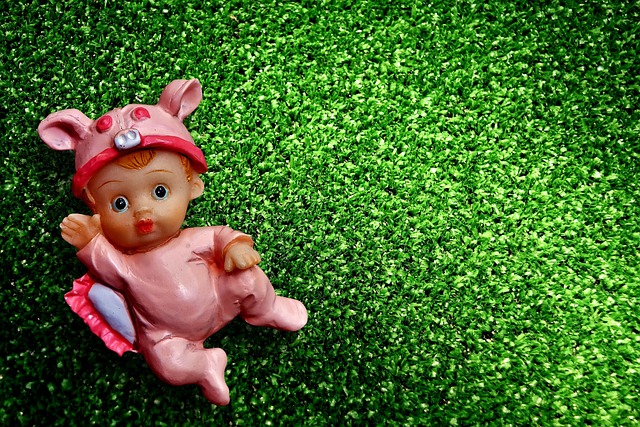Artificial grass serves as an eco-friendly and low-maintenance alternative to traditional natural turf, offering significant environmental benefits by eliminating the need for regular watering, mowing, and chemical treatments. Its production often includes recycled materials, further reducing its carbon footprint, and its durability means fewer replacements over time, lessening waste and resource use. The turf's innovative backing systems promote natural drainage, supporting water conservation efforts. Artificial grass is a sustainable choice for both residential and commercial landscapes, emphasizing closed-loop recycling and the use of safe infill materials. Its environmental advantages are enhanced by green manufacturing practices and responsible end-of-life management, making it a responsible option in landscaping that aligns with sustainability goals. When considering artificial grass, it's important to evaluate its full lifecycle to understand both its long-term benefits and the initial environmental costs, ensuring an informed decision on its environmental impact and financial savings.
Explore the evolving landscape of sustainable living with our in-depth article on environmentally friendly artificial grass. This green alternative to traditional turf offers a solution that aligns with ecological consciousness while providing the benefits of low-maintenance landscaping. Dive into the sections that unravel the materials and manufacturing processes behind eco-synthetic grass, learn about installation and maintenance practices that preserve its environmental advantages, assess the long-term impact on nature, and compare the true costs of both natural and artificial options. Join us as we examine how artificial turf can be a step towards a greener future.
- Understanding Eco-Friendly Artificial Grass: The Sustainable Alternative to Traditional Turf
- Materials and Manufacturing: How Eco-Synthetic Grass is Made
- Installation and Maintenance: Ensuring Your Artificial Grass Remains Environmentally Sound
- The Environmental Impact of Artificial Grass Over Time
- Comparing Natural and Artificial: The True Cost to the Environment and Your Wallet
Understanding Eco-Friendly Artificial Grass: The Sustainable Alternative to Traditional Turf

Artificial grass has become an increasingly popular alternative to natural turf, offering a maintenance-free solution for both residential and commercial landscapes. Unlike traditional grass that requires frequent watering, mowing, and fertilization, eco-friendly artificial turf significantly reduces the environmental impact associated with lawn care. This sustainable choice is crafted from advanced materials designed to mimic the appearance and feel of natural grass without the need for harmful chemicals or excessive water use. The production process of these products often incorporates recycled content, further reducing the carbon footprint and promoting sustainability.
The commitment to environmental stewardship in artificial grass extends beyond material selection. Eco-friendly turf options are engineered with permeable backing systems that allow for natural drainage, ensuring water conservation while maintaining a lush, green aesthetic. Additionally, the long lifespan of eco-artificial grass means less waste and a lower demand for resources compared to the continuous upkeep of real grass. As such, it’s an attractive option for those looking to make a positive environmental impact without compromising on the aesthetics or functionality of their outdoor spaces.
Materials and Manufacturing: How Eco-Synthetic Grass is Made

Artificial grass, a durable and low-maintenance alternative to natural turf, is increasingly being recognized for its potential to contribute to environmental sustainability. The production of eco-friendly synthetic turf begins with the selection of materials that minimize ecological impact. Manufacturers prioritize sustainable practices by using recycled plastics and environmentally safe infill materials in the turf’s construction. These materials are carefully processed, often through a system of closed-loop recycling, to ensure that the production process does not contribute to plastic waste. The yarn used for the fibers is typically made from post-consumer or post-industrial recycled content, reducing the need for new raw materials and the environmental footprint associated with their extraction and processing.
Furthermore, the manufacturing of eco-synthetic grass involves innovative techniques designed to conserve energy and water. For instance, water-based inks are used in the printing process for designing the blades of grass, eliminating solvent-based alternatives that could be harmful to the environment. The durability of these products also means that they require less frequent replacement compared to traditional turf, leading to a significant reduction in long-term environmental impact. This commitment to sustainability not only makes artificial turf an attractive option for both residential and commercial applications but also positions it as a responsible choice for environmental stewardship.
Installation and Maintenance: Ensuring Your Artificial Grass Remains Environmentally Sound

When installing environmentally friendly artificial grass, or turf, it is crucial to adopt sustainable practices. The installation process should minimize soil disturbance to preserve underground ecosystems and reduce carbon emissions associated with ground preparation. Opt for eco-friendly infill materials, such as rubber or sand derived from recycled content, to replace traditional infills that may contain harmful chemicals. These alternatives not only support a greener environment but also provide a safer playing surface without the need for frequent maintenance.
Maintaining your artificial turf in an environmentally sound manner is equally important. Regular brushing and raking help keep the fibers upright, reducing the need for chemical cleaners. When cleaning, use natural, biodegradable soaps to avoid polluting the surrounding area with toxic substances. Additionally, proper drainage systems ensure that rainwater is effectively managed, preventing runoff that could otherwise carry debris and chemicals into local waterways. By taking these steps, your artificial turf can remain a low-maintenance, environmentally friendly solution for years to come.
The Environmental Impact of Artificial Grass Over Time

In recent years, the popularity of artificial grass as an alternative to natural turf has surged, driven by its low maintenance and aesthetically pleasing appearance. Over time, the environmental impact of artificial grass is a subject of growing importance. Initial installation of synthetic turf may necessitate significant energy use due to manufacturing processes and transportation logistics. However, once in place, it significantly reduces the need for watering, mowing, fertilizing, and pesticide applications compared to its natural counterpart, leading to a notable decrease in the environmental footprint associated with grass maintenance. The durability of artificial grass also means that it can last upwards of 10 to 15 years, offering a long-term solution that minimizes the need for frequent replacements and the subsequent environmental costs associated with removing and disposing of natural turf. However, the longevity of these products is contingent on proper recycling practices post-use, as improper disposal could potentially offset the initial environmental benefits. It is crucial to consider the entire lifecycle of artificial turf, from production to disposal, to fully understand its environmental impact over time.
Comparing Natural and Artificial: The True Cost to the Environment and Your Wallet

Artificial grass has become an increasingly popular alternative to natural turf, offering a low-maintenance solution for both residential and commercial landscapes. While natural grass requires regular watering, mowing, and fertilization, which can have significant environmental impacts, artificial turf eliminates these resource-intensive practices. However, the initial installation of artificial grass involves the use of synthetic materials that, depending on their production processes, can contribute to pollution and resource depletion. It’s crucial to consider the lifecycle of both options, from manufacturing to disposal, to accurately assess their environmental footprints.
The environmental benefits of artificial turf are more pronounced over time as it conserves water and reduces the need for harmful chemicals associated with lawn care. However, the true cost to the environment includes the production and transportation of these materials. Consumers should weigh the long-term savings on water and maintenance against the carbon footprint left by the manufacturing process. Additionally, the durability of artificial turf means it can last for decades, potentially reducing the need for frequent replacements compared to natural grass, which can succumb to weather, pests, or disease. When evaluating the true cost, both environmental and financial, homeowners and businesses must consider the full scope of each option’s impact.
In conclusion, artificial grass presents a compelling environmental alternative to traditional turf, offering a sustainable option for both residential and commercial landscapes. The careful selection of materials and responsible manufacturing processes ensure that its ecological footprint is minimized. Proper installation and maintenance practices further cement its status as an environmentally friendly choice. Over time, the cumulative impact of artificial grass on the planet is often more favorable than natural turf, particularly when considering factors like water usage and greenhouse gas emissions. When comparing the long-term environmental and economic implications, it becomes clear that eco-friendly artificial grass is a smart investment for those committed to sustainable living practices.
